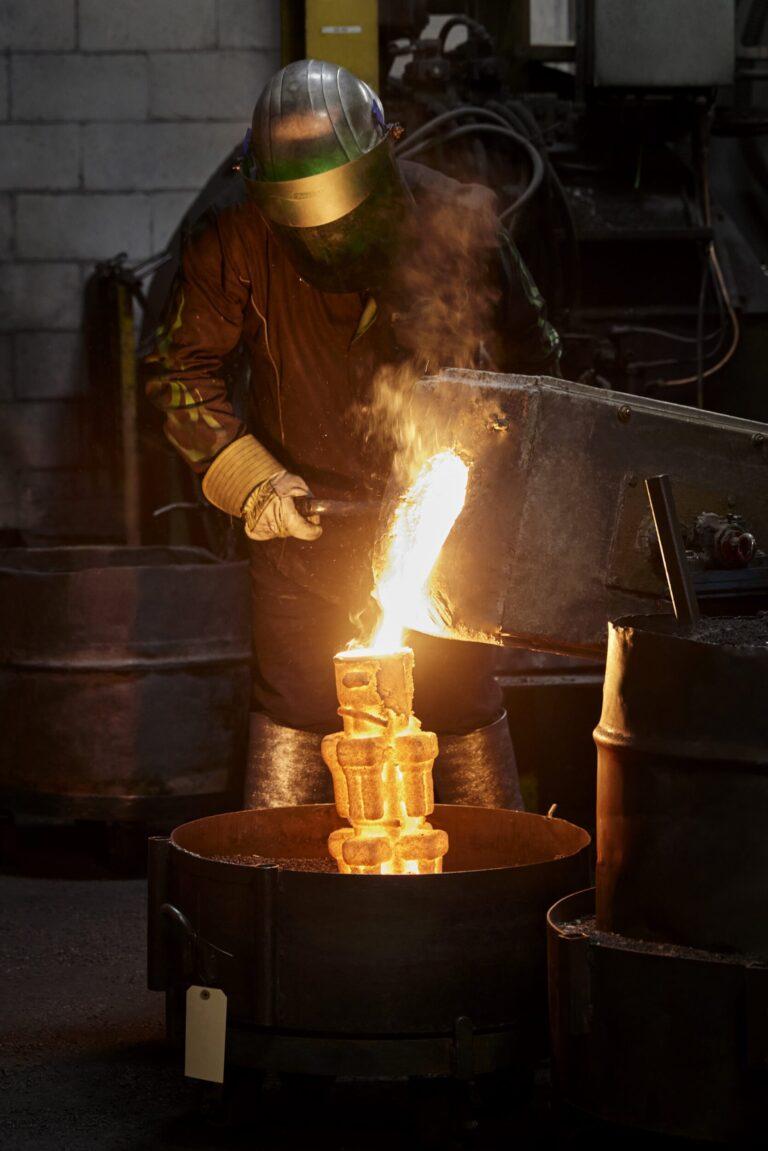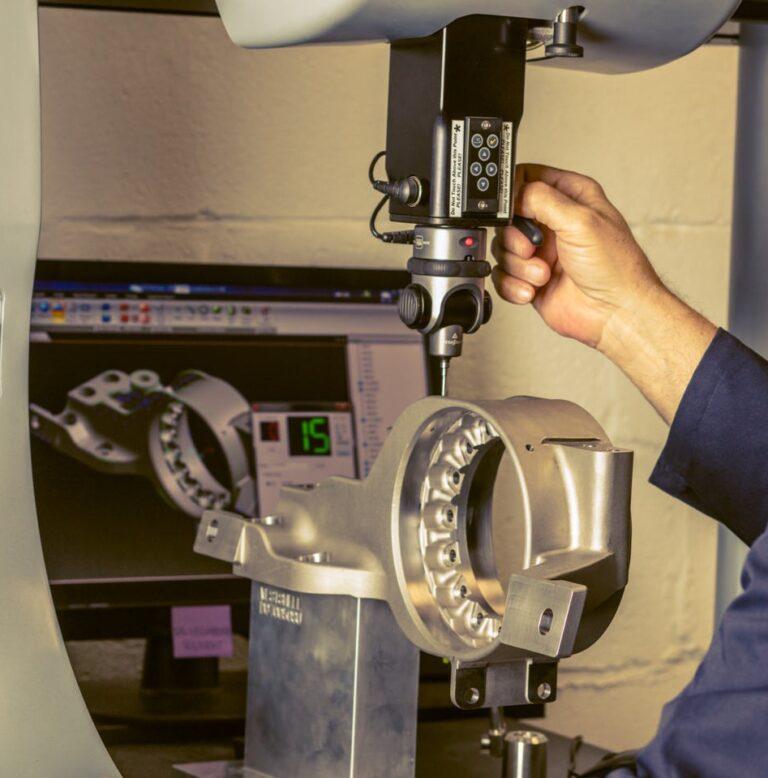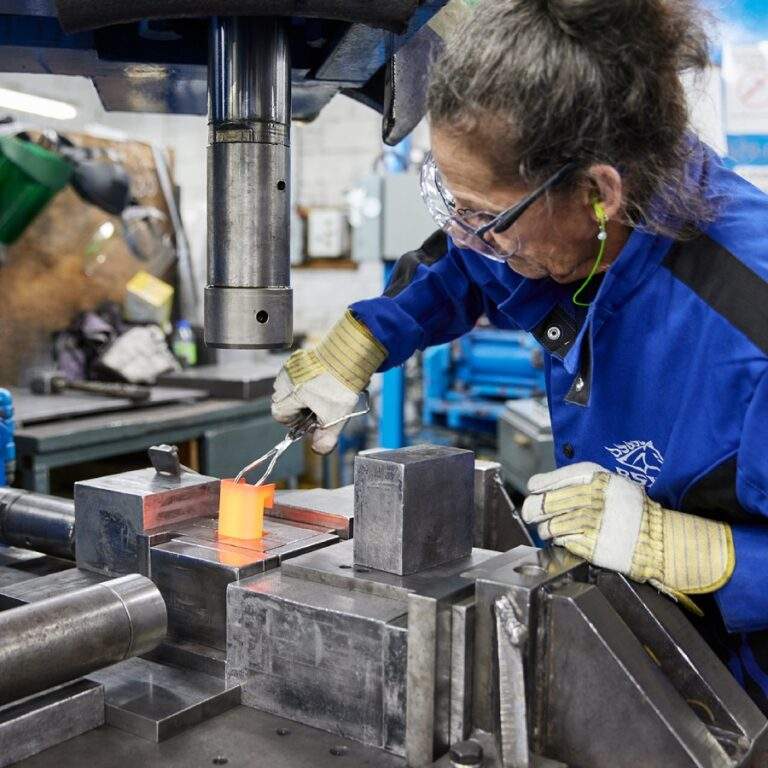From its humble beginnings in the annals of human history to its current rise in cutting-edge industries such as aerospace, military and medical, lost wax casting embodies the masterful fusion of tradition and innovation.
This ancestral method, steeped in centuries of know-how, has metamorphosed into cutting-edge technology, playing a crucial role in manufacturing high-precision components.
The Role of Wax in the Lost Wax Casting Process
Wax plays a crucial and multifunctional role in the lost wax casting process. Working with wax in the casting process has several significant advantages.
Among other things, it is a malleable material that allows the creation of high-precision models with excellent fidelity to the details and shapes of the final parts. This ensures that castings match customer specifications or design requirements exactly.
Wax can be easily sculpted and manipulated to create intricate shapes and designs. This gives designers great freedom to create pieces with unique and personalized designs.
Wax is a relatively light and easy-to-handle material, which facilitates making models and channel networks. It can be precisely cut, sculpted and assembled for older models and complex casting shafts.
H2 – Step-by-Step Guide to the Lost Wax Casting Process
The lost wax casting process takes place in several stages with great precision, ensuring a faithful reproduction of the final parts.
- Model Creation: The initial step is to design an accurate model of the final part to be produced. This model is generally made of wax or a similar material. The wax model must be a replica of the desired final piece, which will be the basis for creating the mold. Artisans often use specialized tools and precise techniques to carve or cast wax to achieve the desired details and dimensions. This step requires great attention to detail and expertise in handling the wax to create a high-quality model that will serve as the basis for making the ceramic mold.
- Assembly: Once the wax models are precisely made to represent the final parts to be produced, they are attached to a central network of wax channels, forming a “tree.” This assembly, or shaft, allows individual models to be connected to a single central point, making the metal casting process easier. The wax channels act as passages, allowing the molten metal to fill the mold during casting.
- Wax Removal: Once the mold is prepared with the wax patterns and covered with a ceramic shell, it is heated in an oven. Heat applied to the ceramic mold causes the wax inside the mold to melt and flow, leaving a cavity that faithfully replicates the shape of the final piece. This step is essential because it creates the space to accommodate the molten metal during casting. Once all the wax has been melted and removed from the mold, all that remains is a hollow cavity that exactly matches the shape of the wax model. This gives the process its name, “lost wax casting,” because it is literally “lost” or removed from the mold during this step.
- Molten Metal Casting: This casting step shapes the final part. Liquid metal is poured into the cavity left by the melted wax, filling the space precisely and taking on the exact shape of the desired part. Pouring molten metal requires great precision and attention to ensure that the metal evenly fills the entire mold cavity.
- Cooling and solidification: This cooling process allows the metal to take the precise shape of the cavity left by the molten wax. During this phase, the metal goes from liquid to solid, allowing it to retain the shape and details of the initial model. The time it takes for the metal to solidify depends on the type of metal used, its melting temperature, and the size and complexity of the casting. In some cases, the metal can solidify within minutes, while in others, it can take several hours.
- Shell Removal: This step requires great precision to avoid damage to the casting. The ceramic shell is carefully broken and removed, revealing the metal casting inside. Removing the ceramic shell may require special tools and delicate handling to ensure the casting remains intact. Once the ceramic shell is removed, the metal part is exposed and ready to be cleaned and finished.
Understanding the Importance of Flask and Sprue in Casting
During casting, the vial and sprue are crucial in ensuring successful and efficient metal casting.
1. Flask: A flask is a frame or container used to hold casting material during the casting process securely. It consists of the drag (lower part) and the yoke (upper part). The bottle provides stability to the mold and helps maintain its shape during pouring.
2. Spru: The sprue is a channel or passage through which molten metal flows into the mold cavity. It is usually attached to the model and extends into the mold cavity. The sprue helps control the metal flow, preventing turbulence and ensuring the mold cavity fills evenly.
Therefore, the flask and sprue are essential components of the casting process because they contribute to the quality and integrity of the final cast product. They help control the flow of molten metal, reduce defects and ensure that the casting solidifies appropriately. Together, they help optimize casting parameters and produce high-quality castings.
The Critical Role of Kiln in the Lost-Wax Casting Process
In the world of lost wax casting, the oven is of capital importance at various crucial process phases. For example, when removing wax, the stove melts and removes the wax from the ceramic mold. This wax, which takes the desired shape of the cast object, must be removed to create a cavity in the mold which will then be filled with molten metal.
Once the wax is removed, the ceramic molds must be preheated before casting the metal. Preheating helps remove any remaining moisture from the mold and ensures even temperature distribution during the casting process. The oven gradually heats the molds to the desired temperature, usually several hundred degrees Celsius, to prepare them for metal casting.
In maintaining an optimal casting temperature, the oven plays a vital role in keeping the molds at the required temperature throughout the casting process. This ensures that the molten metal flows evenly and accurately, ensuring the quality and precision of the castings.
Sprue Base: The Foundation of Successful Casting
The casting base takes a central place in the casting process, acting as an essential element in ensuring the success of casting operations. Designed to facilitate the flow of molten metal from the crucible or casting basin into the mold cavity, it plays a crucial role as a conduit. This conduit allows the metal to flow smoothly and evenly through the mold, ensuring that all areas are filled adequately during the casting process.
A properly constructed casting base helps maintain a stable and controlled metal flow, reducing the risk of casting defects. Providing a clear, even path for the molten metal minimizes turbulence and promotes uniform distribution in the mold.
In short, the casting base plays a crucial multifunctional role. Besides channeling the molten metal, it supports the mold, dissipates heat and facilitates waste disposal. Accurate design and proper execution of the casting base are essential to ensure the production of high-quality castings with minimal defects.
Mastering the Lost-Wax Casting Technique for Precision Metalwork.
Mastery of the lost wax casting technique is crucial to achieving precision in metalworking. This complex process involves several meticulous steps to create detailed metal sculptures or components.
It begins with making an accurate model of the desired object using wax or a similar material. This model is then enclosed in a ceramic shell, forming a mold. The mold is heated to melt and remove the wax, leaving a cavity in the object’s shape behind. The molten metal is then poured into the mold, filling the cavity and taking the shape of the original model. Once the metal has cooled and solidified, the ceramic shell is shattered, revealing the final metal piece.
Mastering this process requires skill, precision and attention to detail to ensure the original model is faithfully reproduced in metal form.


